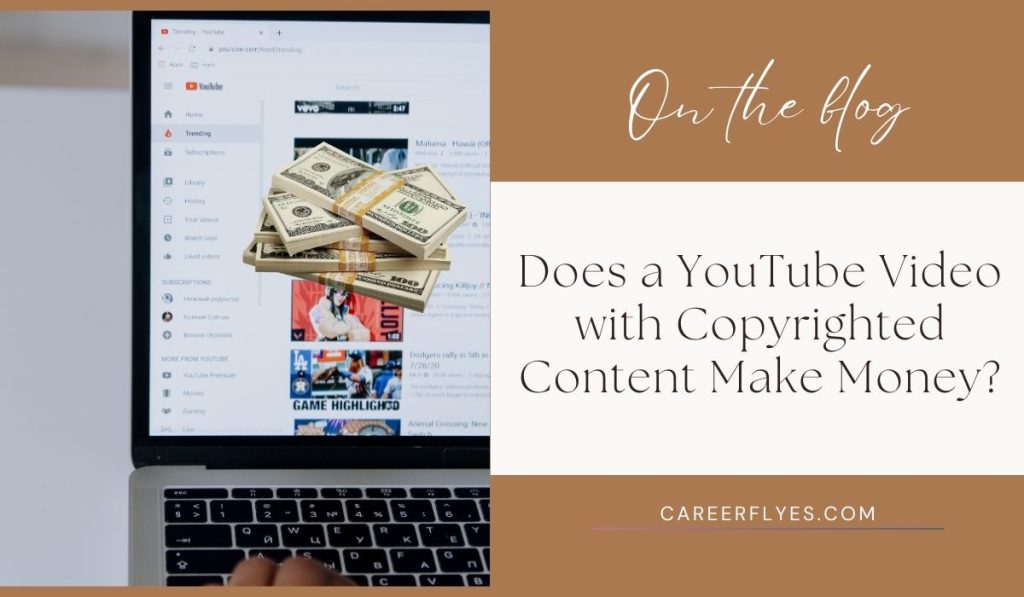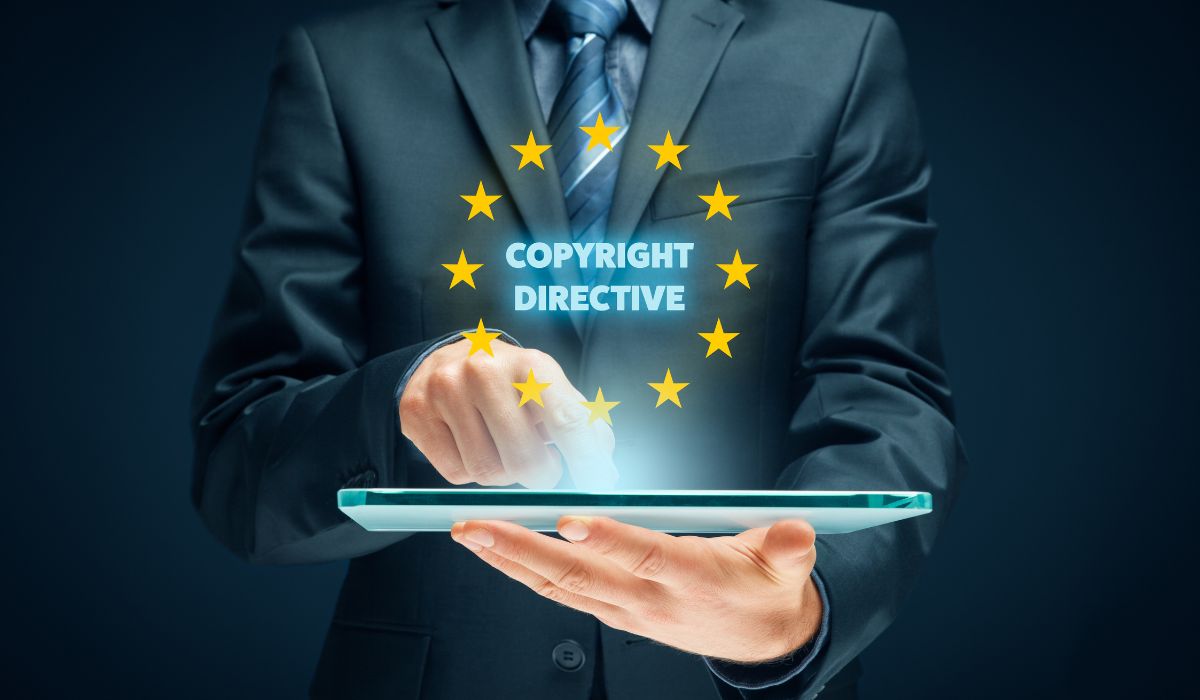Does a YouTube Video with Copyrighted Content Make Money?
5 min read
Does a YouTube Video with Copyrighted Content Make Money? Here’s What You Need to Know
YouTube is one of the largest platforms for sharing videos, but many creators face the challenge of dealing with copyright issues, especially when they want to use music, clips, or other content owned by someone else. So, the question is, can a YouTube video with copyrighted content make money? The answer depends on how copyright laws are enforced on YouTube and the monetization policies in place.
Here’s a our today post on how YouTube treats videos with copyrighted content, how Content ID works, and what options creators have for monetization.
How Copyrighted Content Affects Monetization on YouTube

When you upload a video containing copyrighted material—whether it’s music, a movie clip, or even certain images—YouTube’s system typically detects it using a tool called Content ID. Content ID is an automated system that scans uploaded videos for any copyrighted content. If it detects copyrighted material, it flags the video and takes action depending on the copyright owner’s preferences.
The possible outcomes include:
- The copyright owner claims the video and monetizes it – Any revenue generated from ads placed on the video goes to the copyright holder instead of the creator.
- The copyright owner blocks the video – In this case, the video may be blocked in certain countries or entirely removed from YouTube.
- The copyright owner allows the video to remain without monetization – The video stays up, but neither the creator nor the copyright owner earns ad revenue from it.
So, in general, if you use copyrighted content without permission, any potential ad revenue from that video will likely go to the copyright holder, not you. This arrangement is often the result of licensing agreements that YouTube has with major music labels, film studios, and other content creators.
Fair Use and Its Limitations
Some creators assume that using copyrighted content in specific ways, like reviews or commentary, falls under “fair use.” Fair use is a legal doctrine that allows limited use of copyrighted content without permission, usually for purposes like criticism, commentary, news reporting, and education. However, YouTube doesn’t decide whether something qualifies as fair use; only a court can make that determination.
YouTube provides a few guidelines on fair use, but it’s up to the copyright holder to decide whether or not to file a claim. Many creators who believe they’re protected under fair use still find their videos flagged by Content ID. In some cases, they may need to appeal, which can be a complex process, or risk losing monetization.
Options for Monetizing Videos with Copyrighted Content
If you want to create videos with copyrighted material and still make money, there are a few potential workarounds:
- License the Content: Some music and media companies offer licenses for their content, allowing creators to legally use it in their videos. Licensed content can then be monetized depending on the terms agreed upon.
- Use Copyright-Free or Royalty-Free Content: Many creators use royalty-free music, stock footage, and images to avoid copyright claims. Websites like YouTube Audio Library, Epidemic Sound, and Storyblocks offer content that can be used without risking copyright issues.
- Join a Multi-Channel Network (MCN): Some MCNs have licensing deals with music and media companies, allowing creators to use certain copyrighted material while sharing a portion of the revenue with the copyright holders. However, joining an MCN involves revenue sharing and comes with additional terms.
- Transformative Content: While fair use is tricky, creators can still aim to make content “transformative” by adding significant commentary or critique, which may reduce the likelihood of copyright claims. This approach isn’t foolproof, but it can help in some cases.
- Revenue Sharing Programs: In some cases, YouTube may allow revenue sharing for certain copyrighted songs or content. You can use these assets in your video, but YouTube will split ad revenue between you and the copyright owner. This option typically appears in YouTube’s music library with clearly labeled tracks that allow revenue sharing.
Understanding YouTube’s Content ID and Copyright Claims
If you receive a Content ID claim, it doesn’t necessarily mean you’re in trouble, but it does mean that the copyright owner has taken control of your video’s monetization. When Content ID detects copyrighted content in your video, you’ll receive a notification in your YouTube Studio. From there, you have several options:
- Accept the Claim: By accepting the claim, you agree to let the copyright owner monetize your video. This is often the best choice if you don’t mind sharing revenue or if removing the content isn’t practical.
- Remove or Replace the Content: YouTube has tools that allow you to edit out or replace copyrighted audio with a copyright-free track. This option lets you keep your video up and potentially restore full monetization rights.
- Dispute the Claim: If you believe your content falls under fair use or that the claim was incorrect, you can dispute it. This process may involve providing additional information or making a fair use argument.
It’s important to remember that repeatedly uploading copyrighted content without permission or violating YouTube’s policies can lead to strikes on your channel. Three strikes within 90 days can result in account termination.
Risks and Consequences of Using Copyrighted Content
While it’s possible to use copyrighted content on YouTube, it comes with risks. Videos containing copyrighted material can lose ad revenue, face restrictions, or even lead to channel strikes. For creators who rely on YouTube as a source of income, these risks can impact their earnings and channel growth. Here are some potential consequences:
- Reduced Earnings: Since ad revenue from videos with copyrighted content often goes to the copyright owner, creators may lose potential income.
- Limited Audience Reach: Some copyright claims restrict videos from being viewed in certain countries or regions, reducing the video’s reach and impact.
- Channel Strikes: Repeated copyright violations can result in strikes on your account. Accumulating three strikes within a 90-day period can lead to account suspension or termination.
To avoid these consequences, it’s best to use only content you own or have permission to use.
Conclusion: Can You Make Money with Copyrighted Content on YouTube?
While it’s technically possible to make money with copyrighted content on YouTube, it’s challenging. Without the copyright holder’s permission, you likely won’t receive the revenue from ads on your video. YouTube’s Content ID system ensures that copyright owners get the revenue when their content is used.
If you’re serious about monetizing your YouTube channel, using copyright-free or licensed content is the most reliable path to earning ad revenue. Explore royalty-free resources, consider transforming content with commentary, or negotiate licensing agreements if needed. By respecting copyright laws, you can create content that not only complies with YouTube’s policies but also builds a sustainable and profitable channel.
Did this guide help clarify how copyright impacts YouTube monetization? Share your experience in the comments and let us know if you’ve found effective ways to manage copyright issues on YouTube.






